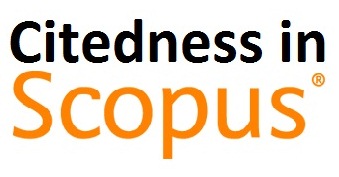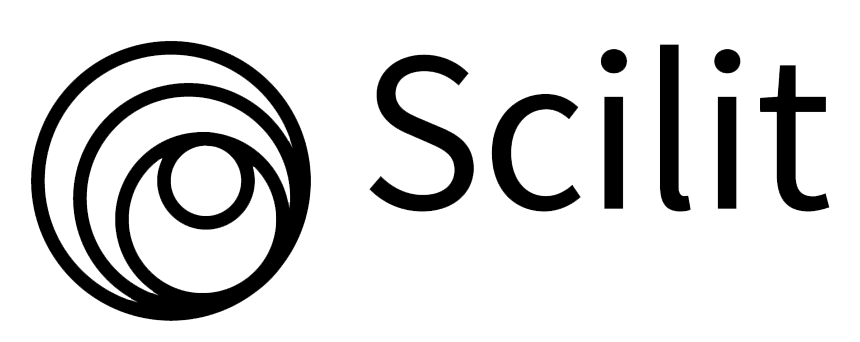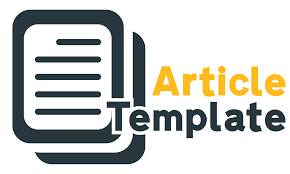A Comparative Study of Three Decision Support Methods: Proving Consistency in Decision-Making with Identical Inputs
DOI:
https://doi.org/10.38043/tiers.v6i1.6157Keywords:
Comparative, Decisions Support System, SAW, SMART, TOPSIS, ConsistencyAbstract
Decision-making in complex environments often requires evaluating multiple alternatives against various criteria, which can sometimes result in inconsistent outcomes when different decision support methods are employed. Such inconsistencies pose significant challenges for decision-makers in determining the most reliable methodology. To address this gap, the present study examines whether three widely adopted decision support methods, Simple Additive Weighting (SAW), Simple Multi-Attribute Rating Technique (SMART), and Technique for Order of Preference by Similarity to Ideal Solution (TOPSIS), produce consistent results when applied to identical input values, criteria, and alternatives. The primary aim is to explicitly assess the consistency of decision-making outcomes across these methods under controlled conditions. The evaluation was conducted using a set of alternatives, with A1 consistently emerging as the top choice. Specifically, the SAW method produced a final score of 0.8998 for A5, the SMART method assigned a value of 0, and the TOPSIS method yielded a closeness coefficient of 0.826 for the same alternative. The unique contribution of this study lies in its systematic, side-by-side comparison of SAW, SMART, and TOPSIS using precisely the same dataset, an approach seldom addressed in prior research. By empirically demonstrating that these methods generate identical rankings under strictly controlled scenarios, this research provides new evidence supporting the methodological robustness and practical interchangeability of these widely used decision support techniques. The findings underscore the reliability of these methods in facilitating objective decision-making and offer valuable guidance for researchers and practitioners in selecting the most suitable DSS method without concern for inconsistent results.
Downloads
References
Sarker, I. H. (2021). Data Science and Analytics: An Overview from Data-Driven Smart Computing, Decision-Making and Applications Perspective. SN Computer Science, 2(5), 122. https://doi.org/10.1007/s42979-021-00765-8
Zabihi, O., Siamaki, M., Gheibi, M., Akrami, M., & Hajiaghaei-Keshteli, M. (2023). A smart sustainable system for flood damage management with the application of artificial intelligence and multi-criteria decision-making computations. International Journal of Disaster Risk Reduction, 84, 103470. https://doi.org/10.1016/j.ijdrr.2022.103470
Taherdoost, H., & Madanchian, M. (2023). Multi-Criteria Decision Making (MCDM) Methods and Concepts. Encyclopedia, 3(1), 7787. https://doi.org/10.3390/encyclopedia3010006
Chen, Y.-L., Shen, S.-L., & Zhou, A. (2022). Assessment of red tide risk by integrating CRITIC weight method, TOPSIS-ASSETS method, and Monte Carlo simulation. Environmental Pollution, 314, 120254. https://doi.org/10.1016/j.envpol.2022.120254
Pandey, V., Komal, & Dincer, H. (2023). A review on TOPSIS method and its extensions for different applications with recent development. Soft Computing, 27(23), 1801118039. https://doi.org/10.1007/s00500-023-09011-0
Cinelli, M., Kadziski, M., Miebs, G., Gonzalez, M., & Sowiski, R. (2022). Recommending multiple criteria decision analysis methods with a new taxonomy-based decision support system. European Journal of Operational Research, 302(2), 633651. https://doi.org/10.1016/j.ejor.2022.01.011
Ara, I., Turner, L., Harrison, M. T., Monjardino, M., DeVoil, P., & Rodriguez, D. (2021). Application, adoption, and opportunities for improving decision support systems in irrigated agriculture: A review. Agricultural Water Management, 257(3), 107161. https://doi.org/10.1016/j.agwat.2021.107161
Wtrbski, J., Bczkiewicz, A., Ziemba, E., & Saabun, W. (2022). Sustainable cities and communities assessment using the DARIA-TOPSIS method. Sustainable Cities and Society, 83(1), 103926. https://doi.org/10.1016/j.scs.2022.103926
Vafaei, N., Ribeiro, R. A., & Camarinha-Matos, L. M. (2022). Assessing normalization techniques for simple additive weighting method. Procedia Computer Science, 199(3), 12291236. https://doi.org/10.1016/j.procs.2022.01.156
Topalolu, F. (2024). Development of a new hybrid method for multi-criteria decision making (MCDM) approach: A case study for facility location selection. Operations Research, 24(4), 60. https://doi.org/10.1007/s12351-024-00871-4
Biswas, T. K., & Chaki, S. (2022). Applications of modified simple additive weighting method in manufacturing environment. Journal of Manufacturing Science and Engineering, 35(4), 830836.
Sari, N. (2021). Implementation of the AHP-SAW method in the decision support system for selecting the best tourism village. Journal of Information Technology CIT Medicom, 13(1), 2332.
Meidelfi, D., Yulherniwati, F., Sukma, F., Chandra, D., & Soleliza Jones, A. H. (2021). The implementation of SAW and BORDA method to determine the eligibility of students final project topic. International Journal of Informatics Vision, 5(2), 144149. https://doi.org/10.30630/joiv.5.1.447
Kuswanto, J., Al Kodri, M. N., Devana, T., Pebriantika, L., & Ningsih, S. (2023). Implementation of Simple Additive Weighting for scholarship admission selection. TIERS Information Technology Journal, 4(1), 17. https://doi.org/10.38043/tiers.v4i1.4022
Siregar, V. M. M., et al. (2022). Decision support system for selection of food aid recipients using SAW method. AIP Conference Proceedings, 15(1), 030019. https://doi.org/10.1063/5.0094385
Bcescu Ene, G.-V., Stoia, M.-A., Cojocaru, C., & Todea, D. A. (2025). SMART Multi-Criteria Decision Analysis (MCDA)One of the Keys to Future Pandemic Strategies. Journal of Clinical Medicine, 14(6), 1943. https://doi.org/10.3390/jcm14061943
Parvaneh, F., & Hammad, A. (2024). Application of Multi-Criteria Decision-Making (MCDM) to select the most sustainable power-generating technology. Sustainability, 16(8), 3287. https://doi.org/10.3390/su16083287
Dewi, N., Laluma, R. H., Gunawansyah, E., Garnia, E., Saepudin, D., & Hendajany, N. (2020). Employee performance assessment system design based on 360 degrees feedback and simple multi-attribute rating technique method integration. Proceeding 14th International Conference on Telecommunication Systems Services and Applications, TSSA 2020, 1518. https://doi.org/10.1109/TSSA51342.2020.9310873
Taherdoost, H., & Mohebi, A. (2024). Using SMART method for multi-criteria decision making: Applications, advantages, and limitations. Archives of Advances in Engineering Science, 2(4), 190197. https://doi.org/10.47852/bonviewAAES42022765
Dewi, R. K., Jonemaro, E. M. A., Kharisma, A. P., Farah, N. A., & Dewantoro, M. F. (2021). TOPSIS for mobile-based group and personal decision support system. Register: Journal of Information Technology Systems, 7(1), 4349. https://doi.org/10.26594/register.v7i1.2140
Rahi, M. M. I., Ullah, A. K. M. A., & Alam, D. M. G. R. (2022). A decision support system (DSS) for interview-based personnel selection using fuzzy TOPSIS method. Journal of Intelligent and Fuzzy Systems, 27(1), 645657.
Efendy, M., Darmawan, A. K., Kartini, B. A., Umam, B. A., Anekawati, A., & Komarudin, A. (2023). AHP-TOPSIS-based decision support system (DSS) for assessing the salt quality for Indonesian salt e-farming. 2023 Eighth International Conference on Informatics and Computing (ICIC), 17. https://doi.org/10.1109/ICIC60109.2023.10382028
Forcina, A., Silvestri, L., De Felice, F., & Falcone, D. (2024). Exploring Industry 4.0 technologies to improve manufacturing enterprise safety management: A TOPSIS-based decision support system and real case study. Safety Science, 169(1), 106351. https://doi.org/10.1016/j.ssci.2023.106351
Asemi, A., Ko, A., & Asemi, A. (2022). The AHP-TOPSIS based DSS for selecting suppliers of information resources. 2022 Second International Conference on Distributed Computing and High Performance Computing (DCHPC), 104116. https://doi.org/10.1109/DCHPC55044.2022.9732125
Tian, J., Wang, Y., & Chen, Z. (2021). An improved single particle model for lithium-ion batteries based on main stress factor compensation. Journal of Cleaner Production, 278, 123456. https://doi.org/10.1016/j.jclepro.2020.123456
Downloads
Published
How to Cite
Issue
Section
License
Copyright (c) 2025 Asyahri Hadi Nasyuha

This work is licensed under a Creative Commons Attribution-ShareAlike 4.0 International License.





















